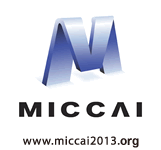
ABOUT NAGOYA
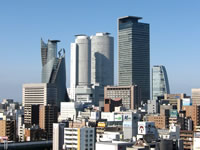
Nagoya City
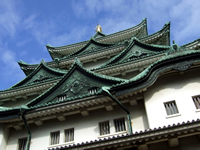
Nagoya Castle
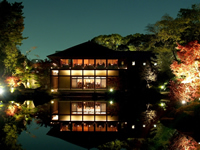
Tokugawa_Garden
About Nagoya
Nagoya is located at the center of Honshu that is main island of Japan. There is a population of 2.25 million. Thanks to the rich water resources of the Kisogawa, Nagaragawa and Ibigawa Rivers, the fertile land which enjoy the blessings of the rivers, and other advantages including good transportation links, its people have lived affluent lives since early days.Nagoya has a long history and is the birthplace of three notable feudal lords, Oda Nobunaga, Toyotomi Hideyoshi and Tokugawa Ieyasu. Also in Nagoya, traditional industries like ceramics and textiles, and today’s key industries like automobiles, aviation and machine tools have developed, and Nagoya has an important role in Japan’s industrial society.
Furthermore, the Central Japan International Airport (Centrair) opened in February 2005, Nagoya keeps on developing as a Japanese international city.
Climate
The average temperature of September in Nagoya is approximately 24 C.Nagoya Downtown Guide
For detail, please visit Nagoya-INFO web page.
Sakae Area
Sakae area is the heart area of Nagoya. You can find many department stores, boutique shops (including European and American brands), restaurants, bars, and hotels in this area. There are three subway stations in Sakae area: Hisaya Odori, Sakae and Yaba-cho stations. These station can be reached from Nagoya Daigaku (Nagoya University) Subway Station (Subway Meijyo line) without transfer. Following landmarks are tourist spots: Oasis 21, Aichi Prefectural Museum, Nagoya TV Tower, Central Park, Beer Gardens.
Mei-Eki Area (Nagoya Central Railway Station area)
Mei-eki area is also the second largest downtown area in Nagoya. You can find skyscraper buildings including Midland Square and JR Central Towers. Buildings of Mei-eki area accommodates many restaurants including Japanese, French, Chinese, Italia cuisines with providing gorgeous views of Nagoya. Boutique shops and department stores are also located in this area. Also many Izakayas (Japanese gastro pubs) stand along the street from cheaper ones to expensive ones. We hope you can find the best Izakaya for you. Also you can visit some industrial museums in Mei-Eki area.
Kanayama Area
Kanayama area is the third largest downtown area. Many hotels and restaurants are located in this area. Also Kanayama station has convenient access to Nagoya University, Sakae area, Mei-eki area and Central Japan International Airport (IATA code: NGO) Nagoya-Boston Museum is located in Kanayama area.
Osu Area
Osu area has very different atmosphere from three areas shown above. Osu areas accommodates many small shops including used clothes, electronics parts, Japanese pop-cultures (anime) and Asian fashions.
Nagoya Food Guide - What to Eat?
In addition to traditional Japanese food or Izakaya food, you can enjoy very unique Nagoya foods. These foods are quite famous for Japanese. Here are examples
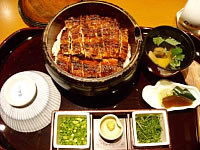
1. Hitsumabushi
:Fresh water eel (unagi), which are typically grilled, slathered in a rich dark sauce, is served over rice. Nagoya's take on the dish, known as hitsumabushi, is served in a traditional wooden bowl accompanied by a rice bowl, a plate of condiments and a pot of broth. It is traditionally eaten in four portions: The first portion is scooped into the rice bowl and eaten straight in order to savor the flavor of the eel. The second portion is eaten with condiments added. The third portion is seasoned like before, but this time broth is added to create a type of chazuke. The final portion can be eaten as you like. Hitsumabushi is relatively expensive, starting from 3,000 yen per person.
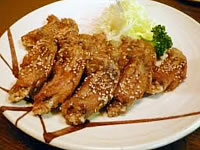
2. Tebasaki
:Tebasaki are seasoned, deep fried chicken wings that are made without batter. Crispy, salty and spicy, they are a great accompaniment to an ice cold beer. Though they can be found at almost any izakaya or yakitori-ya in Japan, tebasaki are particularly famous in Nagoya where they are a little spicier and served covered in white sesame seeds. A few chain restaurants even specialize in this dish. The price for 1 dish is from 400 yen.
Famous chain Izakaya:
‘Sekai no Yamachan’ http://www.yamachan.co.jp/ (Japanese only)
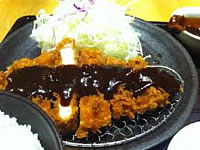
3. Misokatsu
: Misokatsu starts off as your typical tonkatsu dish: deep fried pork cutlets served with shredded cabbage and rice, but deviates in the substitution of a thick, miso sauce for the traditional tonkatsu sauce. The resulting meal has a rich, earthy flavor and a touch of sweetness that compliments the flavor of the crispy, fried pork cutlet.
You can find Misokatsu on the menu of Izakaya.
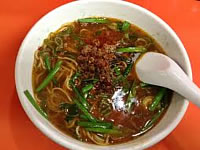
4. Taiwan Ramen
Ground pork, Chinese chives, green
onions and bean sprouts are seasoned hot with red peppers and other spices, fried, and placed on boiled ramen noodles in a soy sauce-based soup. Though the name suggests it comes from Taiwan, actually there is no such extra-hot ramen in Taiwan.
This Ramen is so hot that you should not try if you are not used to hot taste…
But once you try, you may want to eat again and again.Famous Taiwan Ramen Restaurant : Misen
http://www.misen.ne.jp/ (Japanese only)Get more information about
Nagoya Food at…
"The Best Guide to Bars, Restaurants and Nightclubs in NAGOYA"
http://www.bar-and-restaurant.com/en/
SITES TO VISIT
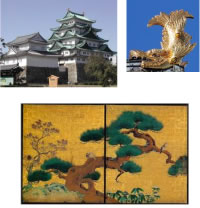
Nagoya Castle
Nagoya castle is famous for shachi-hoko, gilded dolphin-like sea creatures.
In May 1945, during the air raids on Nagoya in the World War II, most of the buildings including the main and small dungeons, and the Hommaru Palace, were burned down. So this main dungeon is a ferroconcrete replica. Fortunately, however, three corner towers, three gates, and most of the paintings on the sliding doors and walls in the Hommaru Palace survived the fire, and have been handed down as Important Cultural Assets.
Admission Fee: ¥500
Tokugawaen(Tokugawa Garden) Combination Ticket ¥640
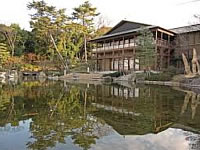
Tokugawaen
The region around Nagoya is well known as the birth place of 3 shoguns; Oda, Toyotomi and Tokugawa.
Tokugawaen is a Japanese garden which was built by the family member of Tokugawa.
Near Tokugawaen, there is Tokugawa art museum in which many arms, armors, tea ceremony equipment and so on that includes National Treasures and Important Cultural Properties are shown.
http://www.tokugawaen.city.nagoya.jp/english/index.html
Get more information
about Nagoya at…
"Japan guide.com "
http://www.japan-guide.com/ Please jump to 'Nagoya'.
"Nagoya Info" http://www.nagoya-info.jp/en/
